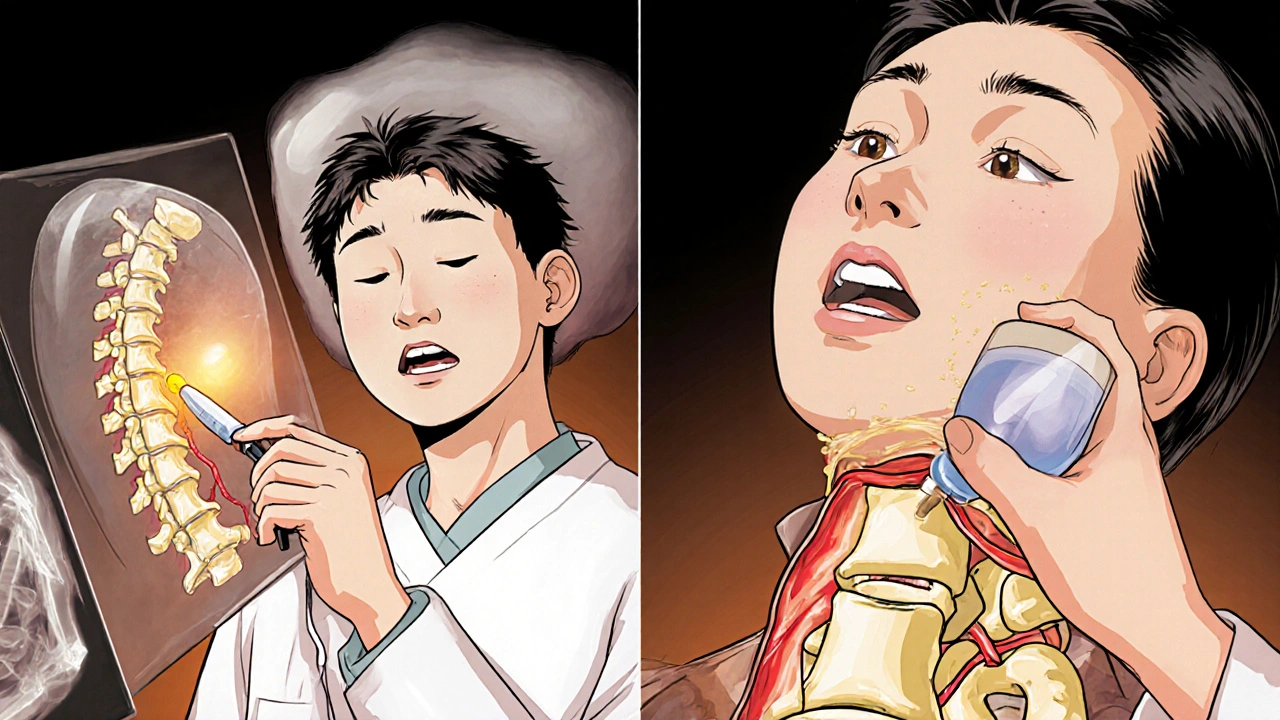Kyphoplasty: What It Is, Who It Helps, and What to Expect
When a vertebra collapses due to osteoporosis or injury, it can cause severe back pain, loss of height, and even a curved spine. That’s where kyphoplasty, a minimally invasive surgical procedure that restores collapsed vertebrae using medical-grade bone cement. Also known as vertebral augmentation, it’s designed to stabilize fractures, reduce pain, and help people get back on their feet without long recovery times. Unlike traditional spine surgery, kyphoplasty doesn’t require large incisions or months of healing. It’s often done as an outpatient procedure under local or light sedation.
Kyphoplasty is most commonly used for vertebral compression fractures, a type of spinal break that happens when the front part of a vertebra collapses, often due to weakened bone. These fractures are especially common in older adults with osteoporosis — women over 65 are at highest risk. But they can also happen after trauma, cancer spreading to the spine, or long-term steroid use. The procedure works by inserting a small balloon into the fractured bone, inflating it to lift the collapse, then filling the space with cement. This isn’t just about pain relief — it’s about restoring posture and preventing further spinal deformity.
It’s not for everyone. If the fracture is very old, the bone is too crumbled, or there’s nerve damage already, kyphoplasty may not help. That’s why doctors often use X-rays or MRIs first to check the fracture’s age and condition. People with mild pain might do fine with physical therapy and pain meds. But if you’ve been stuck in bed for weeks, can’t stand up straight, or your pain won’t respond to anything else, kyphoplasty could be a turning point. Studies show most patients feel better within days, and many go back to normal activities in under a week.
Related treatments like vertebroplasty, a similar procedure that injects cement without using a balloon to restore height are also available, but kyphoplasty has a slight edge in restoring spinal alignment. Both use the same type of bone cement, a special polymer that hardens quickly inside the bone to provide structural support. Neither is a cure for osteoporosis — that’s why doctors often pair the procedure with calcium, vitamin D, and medications to strengthen bones long-term.
What you’ll find in the posts below isn’t just a list of articles — it’s a practical guide for people navigating spinal pain, medication choices, and recovery. You’ll see how people manage chronic back pain without opioids, how to track meds that affect bone density, and how to avoid complications after procedures like kyphoplasty. Whether you’re considering the surgery, recovering from it, or helping someone who is, these posts give you real-world insights — not just textbook definitions.

Kyphoplasty vs Vertebroplasty: What You Need to Know About Vertebral Fracture Treatment
Kyphoplasty and vertebroplasty offer fast pain relief for spinal fractures caused by osteoporosis. Learn how they work, their differences in cost, risk, and outcomes, and which one is right for you.